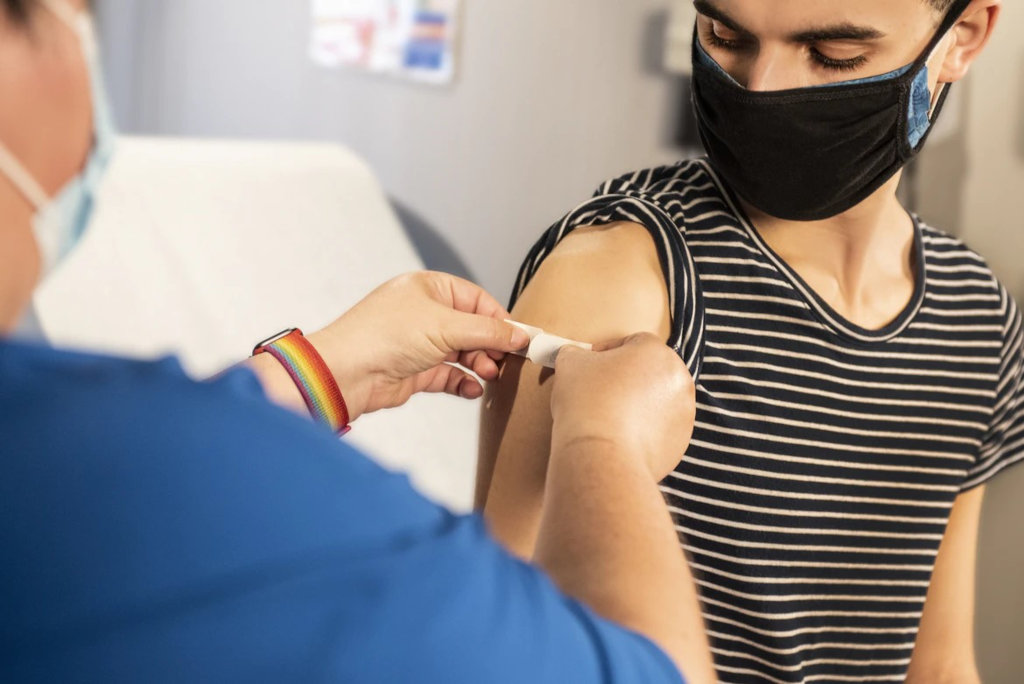This generation of Europeans has the power to do something unique: wipe out a devastating form of cancer. The question is how quickly it can be achieved and whether people in some parts of Europe will continue to suffer while others face much lower risk of illness.
Cervical cancer is caused by human papillomaviruses (HPV) ‒ a virus that also leads to several other types of cancer, as well as genital warts. The spread of the virus can be prevented through HPV vaccination, usually given in early adolescence. The first signs of cancer (known as precancer) can also be detected through screening, allowing treatment before tumours develop.
These tools present an enormous opportunity, but there are challenges ahead. One in four parents is not aware of HPV, and vaccine uptake has been challenging in several European countries ‒ sometimes due to misinformation. There are also big gaps in vaccination and screening services across Europe.
To understand how Europe can achieve the elimination of HPV as a public health concern, we spoke to Dr Xavier Bosch, Scientific Coordinator of HPV World and renowned expert on cervical cancer prevention.
Do you believe that Europe can eliminate cervical cancer?
Many countries in western and northern Europe will do so. The somewhat arbitrary definition of a public health problem is a condition with an incidence rate at or below 4 per 100,000. A few countries are already very close to it. These countries often also have well organised screening programmes and are vaccinating girls and boys at high levels. In contrast, in many eastern European countries, cervical cancer incidence is high or very high, and prevention programmes are insufficient.

What actions or policies are needed to make this a reality across Europe?
Countries need to match the inspirational goals set by the WHO to the reality of their health services. [WHO goals: vaccinate 90% of girls below 15 years of age; screen women for HPV twice at 35 and 45; and treat 90% of cases of cancer and precancer.]
Infant vaccination is common in all countries and the introduction of a novel adolescent vaccine, particularly in school-based programmes, should not be too difficult nor too costly. In contrast, screening programmes are strongly linked to social development and public health programmes. Boosting their quality often requires intensive efforts in educational and training as well as in equipment and facilities.
Moreover, the introduction of HPV tests as a primary screening tool [replacing the conventional 1-3 yearly cytology examination], in line with the latest European guidelines, has also proven to be a slow process.
When do you think it is realistic to hope for the elimination of cervical cancer in Europe?
What is important is to monitor progress in each country and to learn from the best experiences. Some countries will certainly reduce incidence below 4 per 100,000 within this decade.

If this is successful, will other HPV-related cancers also be eliminated?
Vaccination is the key pillar. Today, vaccination of young girls against HPV 16 and 18 has reduced the incidence of HPV infections, and of various stages of precancerous lesions, as well as cancer in organs where HPV is capable of inducing cancer [the cervix, vulva, vagina, anus, penis, and oral cavity]. Screening is capable of reducing cervical precancer and cancer but does little to address cancer in other organs.
What countries are setting a good example in terms of screening, vaccination and treatment of HPV-related diseases?
The Nordic countries and the UK are developing very good programmes and have done so over a number of years. They set the examples in monitoring impact and reporting on achievements of population-based vaccination or screening campaigns. Prevention is complex in terms of showing and evaluating the quality and the impact of complex interventions. In some countries setting up information systems ( i.e. cancer registries) has been quite difficult.

What role can the EU play in supporting this elimination goal?
The EU has already published a road map to accelerate the elimination campaign in Europe in the decade to 2030. It identified 5 pivotal areas of intervention that, in brief, call for:
- Coordination of services and governance of preventive interventions
- Training health professionals in each of the interventions (vaccination, screening and treatment, including palliative care)
- Defining policies and communication strategies that consider the cultural variability in the European population, with a view to reducing disparities and inequities in the campaigns
- Enhancing data production and monitoring interventions and
- Using the best innovative alternatives (e.g., Artificial Intelligence, digital health tools) in a responsible way to improve health outcomes.
These guidelines should allow monitoring of the system, adopting the most efficient strategies and inspire the countries that need it the most.

Why is it important to vaccinate boys and girls?
HPV is largely a sexually transmitted infection affecting both males and females. Initially, research focused on cervical cancer but soon it was unveiled that HPV is a strong mucosal carcinogen in both genders affecting the anogenital tract, the oral cavity and oropharynx. In some countries, such as the US, the incidence of oropharyngeal cancer in males has already bypassed the incidence of cervical cancer.
Apart from cervical cancer, none of the other HPV-induced cancer locations benefit from screening programmes. The essence of stopping the transmission of a virus is to break the transmission chain in as many links as possible. Populations intensively vaccinated also protect the unvaccinated people living in the community.
Vaccination interrupts transmission and therefore the higher the vaccination coverage in both genders the faster the impact in the reduction of viral circulation.




A.KRETSIS
May 1st, 2023
Could you please tell us , how many years and to how many people it is tested your “new wonder vaccine” , and what is it’s side defects … You are talking about our children here !!!
Gary Finnegan
May 9th, 2023
HPV vaccines have been around for almost 20 years. They have been tested and approved by independent regulators in multiple countries based on clinical trials. After that, authorities monitor safety in the many millions of people given the vaccine. They are widely viewed by scientists, doctors and regulators as a safe and effective way to reduce HPV-related cancers.
Cervical cancer usually occurs several years after exposure to the human papillomavirus (HPV). There is already good evidence that the vaccines have reduced rates of pre-cancerous abnormalities which can progress to cancer. This will, over time, lead to a fall in cancers and cancer deaths. Countries with high HPV vaccine uptake will effectively eliminate cervical cancer. Others will not.
In reality, we can expect to see early adopters with high vaccine uptake (Australia, Scandinavian countries, Malta etc.) wipe out cervical cancer while countries with low/late access to the vaccine (developing countries) and those with policies that did not support the vaccine early (Japan) continuing to have cases and deaths.
https://www.gavi.org/vaccineswork/five-charts-15-years-hpv-vaccine?gclid=CjwKCAjw3ueiBhBmEiwA4BhspIA0WvyAdl6IXFbTHtBLMNK1ogJPae-Bdw4Ohrx1KaamuxtLmY44VRoCCAoQAvD_BwE